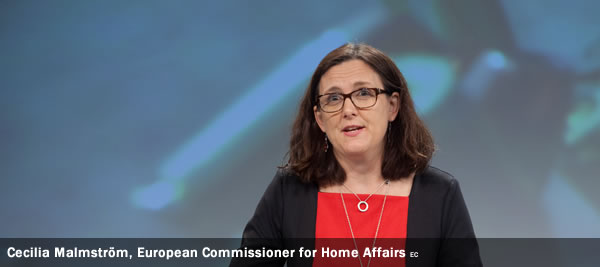“Every week, we hear of new acts of violence being committed with firearms. Yet the debate about the illegal use and trafficking of guns in Europe is worryingly quiet,”said Cecilia Malmström, EU Commissioner for Home Affairs. She commented: “The American debate on gun prevalence is often more visible, when we should be focussing on the home front. We have plenty of work to do here in Europe to make sure handguns, rifles and assault weapons do not end up in the hands of criminals.”
The Commission is now putting forward ideas to address weaknesses in the EU, across the whole lifecycle of weapons, including production, sale, possession, trade, storage and deactivation, while respecting strong traditions of lawful gun use, like sports shooting and hunting for example.
Gun attacks in Europe have repeatedly caught public attention, notably in Norway, Belgium, Finland, France or Italy to mention but a few. No country is unaffected and in the EU as a whole, more than one thousand people are victims of homicide by firearms each year, and half a million firearms that have been registered as lost or stolen in the EU remain unaccounted for.
Today the Commission is presenting suggestions on how to reduce gun related violence in Europe. It identifies actions at EU level, through legislation, operational activities, training and EU funding, to address the threats posed by the illegal use of firearms.
On the same occasion, the European Commission is publishing the results of a Eurobarometer survey showing that six in ten Europeans actually believe that the level of crime involving firearms is likely to increase over the next five years; it also shows that overall 55 percent of Europeans want stricter regulation on who is allowed to own, buy or sell firearms.
Stricter common EU-wide rules on how to deactivate firearms might ensure that once firearms have been taken out of use they remain inoperable.
The Commission will look at a common approach on how to mark firearms with serial numbers when they are manufactured in order to help trace those used by criminals.
It is necessary to consider EU legislation with common minimum rules on criminal sanctions to ensure that deterrence works in all Member States, and that there are no legal loopholes for traffickers. Such rules could prescribe which firearm offences should be subject to criminal sanctions (illicit manufacture, trafficking, tampering with markings, illegal possession of a firearm and intent to supply firearm), as well as specifying the level of sanctions that should be imposed by Member States.
Reducing gun violence could also be done by tightening the EU internal market Directive on the possession of weapons in the Member States, by for example reducing access to particularly dangerous weapons models for civilian use. Procedures for the licensing of weapons will also be looked at in search for concrete solutions.
Controls on the sale and illegal manufacturing of firearms should be properly enforced. The Commission will also look for more information on new technological challenges, such as online sales of weapons or 3D printing of weapons parts, but also on how to reduce the risk of illegal delivery of firearms by postal services.
The Commission will also look at how to reduce the threat of diversion from third countries through technical assistance, including to reinforce their arms export control systems, close down smuggling routes and better manage stockpiles of military weapons.
These suggestions will now be discussed with the European Parliament, Member States and stakeholders to assess the different options, including legislative action.
These priorities draw on discussions with law enforcement authorities, the views of victims of gun violence, NGOs and authorised manufacturers retailers and users, as well as the results of a Eurobarometer survey and the responses to a public consultation.
